- Fear after a heart attack is real. Here’s how to cope. www.heart.org
- Your heart at risk: The hidden link between psychological stress and heart disease Moneycontrol
- Could your anxiety be a heart attack? Study reveals the warning signs Times of…
Blog
-
Fear after a heart attack is real. Here’s how to cope. – www.heart.org
-
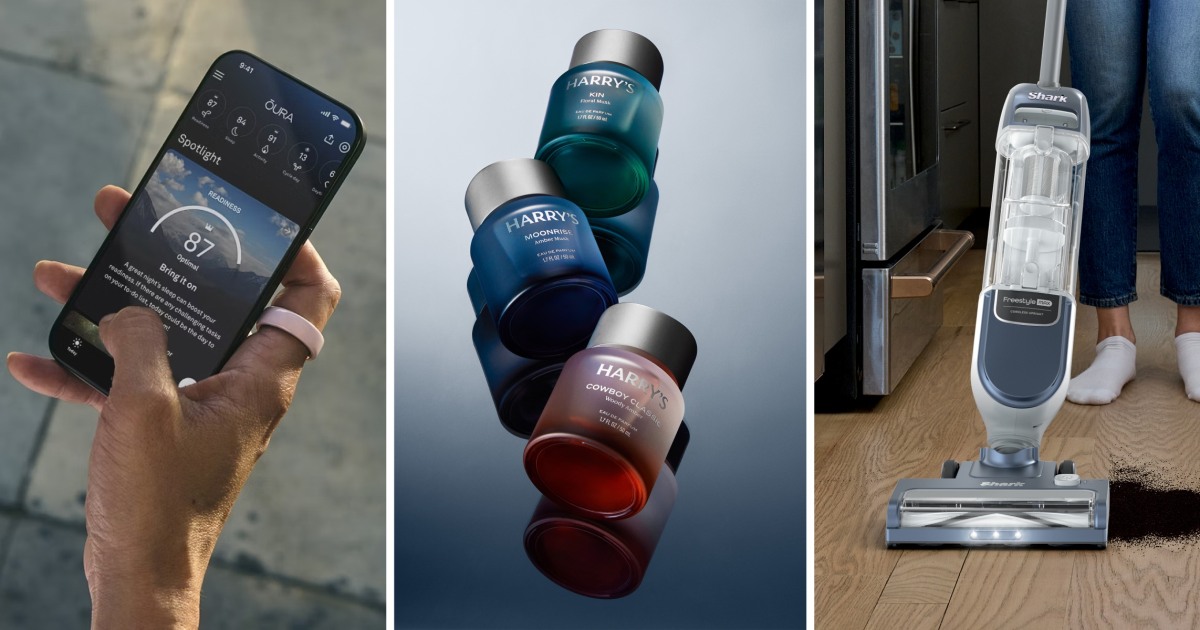
The Best New Products in October 2025: Oura, Rhode & Shark
This story is part of NBC Select’s New & Notable column, where we highlight our favorite product launches. We will continuously update this article throughout the month with new releases we think you should know about.
Apparel and footwear launches
Outdoor Voices Hike Collection
Outdoor Voices’ Hike Collection includes layerable clothes designed to support outdoor activities, especially if you’re braving inclement weather or rough terrain. You can buy men’s and women’s pieces like track pants with mesh panels for extra ventilation, fleece jackets and vests, waffle long sleeves, fleece dresses, sweatpants and more.
Other notable apparel and footwear launches:
- Reebok Nano Pro Training Shoe
- Superfeet Run Pacer Elite
Tech launches
Oura Ring is Rabinowitz’s favorite smart ring right now, but he wasn’t always a fan of the gold and rose gold colorways. Oura Ring 4 Ceramic could change that. It’s a new version with an outer layer made of zirconia ceramic (instead of titanium). “I saw the ceramic models in person — they are much more colorful and fun than the titanium colorways,” says Rabinowitz.
Alongside the Ceramic version, Oura announced a portable charging case, multi-ring support and upcoming blood panel and Amazon Alexa+ support.
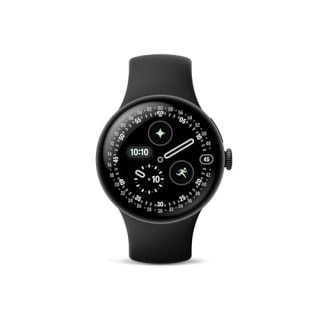
The Google Pixel Watch is our favorite smartwatch for anyone with an Android phone, and the new Pixel Watch 4 has some notable upgrades compared to the previous version. It’s got a brighter screen (3,000 nits, as bright as an Apple Watch Ultra 3), better battery life (up to 40 hours in the larger version) and faster charging. It also now has satellite SOS communication — you can contact emergency services when you’re off-the-grid by connecting to a satellite for messaging. “The list of improvements goes on (better automatic workout tracking, on-device Gemini, etc.), but I think it’s safe to say the Google Pixel Watch 4 is still the Android smartwatch to get,” says Rabinowitz.
Ring, the smart home security brand owned by Amazon, is launching multiple new and updated products this month. The most notable are the “Pro” cameras that are capable of 4K resolution video and 10 times digital zoom, which should make it easier to identify people, objects, pets and more at a distance.
Other notable tech launches:
- Beauty and wellness launches

Rhode just added hydrogel eye patches to its skin care lineup. They target dark circles near the inner corners of your eyes and fine lines around the outer corners using ingredients like caffeine, peptides, sodium PCA and glycerin, which depuff, brighten, moisturize and tighten skin, according to the brand. They also have an inherently cool feel, so you don’t have to refrigerate them beforehand. Rhode recommends wearing the under-eye masks two to three times per week for 10 to 15 minutes at a time.
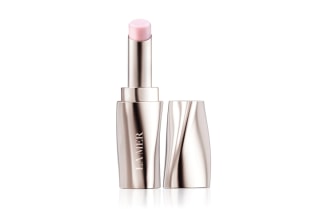
La Mer’s The Lip Treatment is equal parts skin care and color. It hydrates and plumpens using emollients like plant-based oils and butters, as well as supports the skin’s natural collagen to define the overall look of lips, according to the brand. It leaves behind a shiny look and a soft, smooth feel. It’s available in a sheer bare shade, as well as three buildable colors: rose (pink), honey (peachy beige) and cocoa (neutral brown). You can also use it as a primer under other lipsticks and glosses.
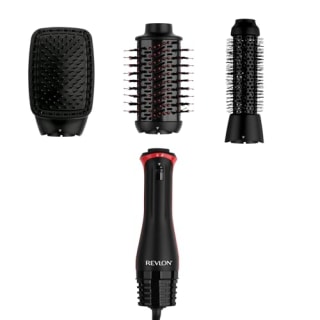
Revlon’s new travel-friendly One-Step Multi-Styler can dry, curl, smooth, shape and volumize hair with its three interchangeable head attachments. You get a volumizer plus a brush that dries hair while adding bounce and volume; a root booster head that makes curls, waves and flips; and a paddle brush head that detangles, smoothes, tames and styles hair. Each attachment has tangle-free bristles, and the multistyler’s ceramic technology and temperature controls protect hair from heat damage, according to the brand.
Other notable beauty and wellness launches:
Travel launches
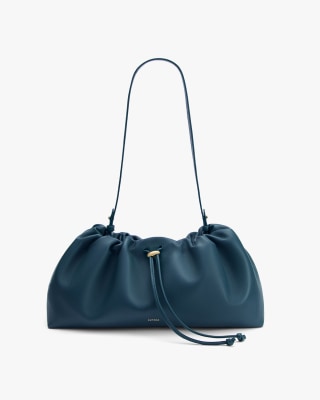
You can wear Cuyana’s The Dia Bag as an oversized clutch or shoulder bag (it has an included removable shoulder strap), and if you buy the adjustable strap separately, it becomes a crossbody, too. The east-west bag has cinched and magnetic closures, a small interior pocket and a key loop, plus it’s big enough to fit your phone, wallet, sunglasses and a small planner. It’s made from Turkish lambskin leather with jewelry-inspired hardware, and Cuyana sells compatible gold chains separately (a chunkier one and a more delicate looking option) if you want to elevate the bag’s look. The Dia Bag comes in a mini version, too.
Other notable travel launches:
- Fjallraven High Coast Tote
- Fjallraven High Coast Backpack
Home and kitchen launches
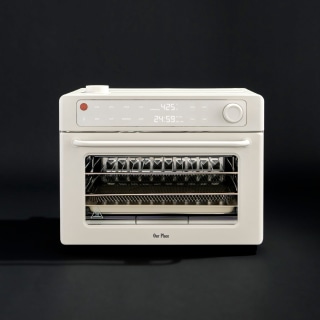
The Wonder Oven Pro is a new and improved version of Our Place’s original Wonder Oven. It has a digital control panel, rather than dials, that lets you adjust the appliance’s timer, temperature, oven light and mode (there’s eight modes, including bake, air fry and toast). Its quartz and stainless steel heating elements also cook food faster and more evenly compared to the original model, according to the brand. The Wonder Oven Pro, which has a large 30-liter capacity, comes with a bake pan, air fryer basket, wire rack and crumb tray.
NBC Select reporter Zoe Malin has been using the Wonder Oven Pro for about two weeks. “I loved the original Wonder Oven, but the Wonder Oven Pro is a major upgrade. It heats up and cooks food so much faster than my standard oven — I honestly haven’t turned on my standard oven since I got this,” she says. “I wasn’t able to set an exact time or temperature on the original Wonder Oven due to the dials, which was a major flaw for me. But the Pro’s digital display now makes that possible, and since it’s a bit bigger, I can fit so much food inside. Cooking on two racks is also more efficient in this model — I put fish and veggies on one rack and potatoes on another almost every night for dinner.”

Ruggable’s rugs have always consisted of two pieces: a pad and cover. But the new Ruggable All-in-On combines everything into one piece, eliminating the need for separate layers or assembly. You just take it out of the box and roll it out. The rug is machine-washable and stain-resistant, according to the brand. It has a built-in non-slip backing, too. You can buy Ruggable All-in-One rugs in a variety of colors and styles, and two textures: tufted, which is best for high-traffic spaces, and plush, which is extra soft and has thicker fibers with a cozier look.
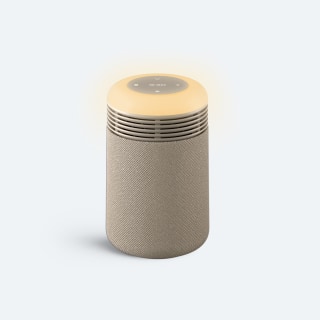
Blueair makes some of our favorite air purifiers, and this new model combines its air purification with a sunrise alarm clock. You can customize the air purification, light modes, and alarm from the purifier or through the Blueair app. It also has a USB-C port, so you can plug in your phone or earbuds and charge them from the air purifier. It’s small and light enough to fit on a nightstand or bedside table.
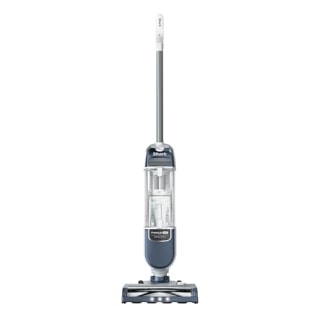
Shark’s latest cordless upright vacuum has the strongest suction yet for an under 7-pound model, according to the brand. A full battery gives you up to 20 minutes of run time, and its charge cycle is about three hours long. The vacuum, which has a 0.74-quart dust cup, is designed with dual-speed brushroll technology — that means it automatically swaps between deeply cleaning carpets and gently cleaning bare floors. Its LED headlights also highlight dirt and dust on your floors so you don’t miss spots, and its anti-clog design ensures consistent airflow and reduced maintenance.
Other notable home and kitchen launches:
Fitness and outdoor launches
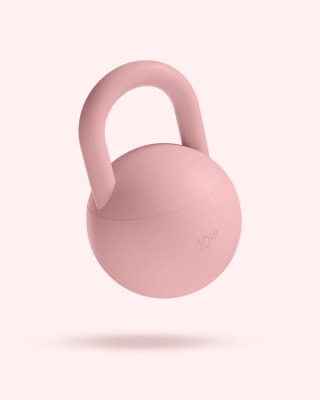
The Kettlebell is one of Bala’s newest pieces of strength training equipment, available in 10-, 20- and 30-pound sizes. It has a rigid handle so you can securely grip it (even when you’re sweaty) and a cushioned base that’s gentle on your floors. Bala’s Power Ball is also new. It’s a small, round, handheld weight available in 2- and 3-pound sizes, making it best for yoga, Pilates, aerobics, core training and rehabilitation, according to the brand.
It’s not often a major fitness brand overhauls its entire product lineup, but that’s what Peloton did this month with five new launches. The new fitness machines all have large, built-in swivel touchscreens, so you can rotate them depending on your activity. The plus-series devices have a built-in camera that tracks your movements, reps and weights, and can give you feedback in real time.
All the devices use the new Peloton IQ software, which uses your workout data and history to give personalized recommendations for workouts and fitness plans. You can sync Peloton with your Apple, Garmin or Fitbit accounts.
Other notable fitness and outdoor launches:
- Hyperice Normatec Hip Attachment
Why trust NBC Select?
To round up the best new launches each month, reporters Zoe Malin and Harry Rabinowitz choose products they think NBC Select readers should know about. They include products from brands NBC Select has previously covered, or brands staffers recommend. Malin and Rabinowitz also regularly try new product launches to share their first-hand experiences.
Catch up on NBC Select’s in-depth coverage of tech and tools, wellness and more, and follow us on Facebook, Instagram, Twitter and TikTok to stay up to date.
Continue Reading
-

After Strong Outcomes in AML, Olutasidenib Shows Response in IDH1+ MDS | Targeted Oncology
IDH mutations, which are a major target of interest in acute myeloid leukemia (AML), are also present in a minority of patients with myelodysplastic syndrome (MDS). Due to the durability of response and favorable tolerability of IDH1 inhibitors, targeting these mutations in MDS has been investigated and has shown promise favorable survival outcomes a phase 1/2 study (NCT02719574) with a cohort of 22 patients receiving olutasidenib (Rezlidhia).
These patients were treated in a range of settings with olutasidenib including in combination with azacitidine or as a single agent, and in the front line or after disease relapse, resulting in an overall response rate (ORR) of 59% and a median overall survival (OS) of 27.2 months, demonstrating the potential use of a targeted therapy in MDS.1
“If you have an IDH1 mutation, that is just so important to know in MDS and should drive therapy decisions,” said Justin Watts, MD, associate professor in the hematology division at the University of Miami Miller School of Medicine.
In an interview with Targeted Oncology, Watts discussed the outcomes in this trial of patients with MDS and how to approach using an IDH1 inhibitor. In the upcoming second part of this interview, Watts discussed the significance of the long-term durability of response with olutasidenib that has been observed in some patients with AML and the next steps in research for IDH-targeted agents in AML and MDS.
Targeted Oncology: Could you describe the background for the use of olutasidenib in MDS?
Justin Watts, MD: Olutasidenib was first developed for patients with relapsed/refractory AML with an IDH1 mutation, and its approval was in that population. We had wanted to look at MDS the whole time. In the phase 2 portion of the study, we developed multiple subcohorts for other populations, including patients with MDS. What we did which I really liked was that we were quite broad, allowing both frontline and relapsed/refractory MDS or HMA [hypomethylating agent] progression, and both single-agent or combination therapy with azacitidine, which had not yet been done in MDS with an IDH1 inhibitor. That was a very good move by us at the time, because MDS is a rare disease, and this is a rare mutation. It allowed us to accrue enough patients early to get a sense of what was happening.
What were your findings in the phase 1/2 study of patients with MDS?
First, I would say that this was a very high-risk MDS population. There were no low-risk patients, and there were only a couple of intermediate-risk patients. Eighty-six percent of the 22 patients were high or very high risk, and some even had AML by new criteria like the International Consensus Classification. That being said, what we have seen in AML is that the patients who do very well tend to have lower blast counts and fewer mutations and lack of signaling pathway mutations—more resembling MDS, just their blasts are over 20%. So we weren’t surprised to see that these patients with MDS overall did very well with a 60% ORR in a mixed population, which…is greater than expected with standard-of-care azacitidine, or HMA alone, using a targeted therapy in both a single-agent and combination setting.1
The OS was equally impressive, and I think that’s due to both duration of response in the responders and the achievement of transfusion independence even in patients who don’t have a full complete response [CR] or an optimal response, which is also very important for long-term outcomes. There was notable achievement of transfusion independence, or maintenance of transfusion independence if they were independent at baseline on the study, a real lack of myelosuppression, and the [median] OS was around 27 months for the entire population.… But even when you looked at the relapsed/refractory [patients], who historically have OS on the order of 5 or 6 months, it was over 16 months in this group. So that was very encouraging.
How does the approach to treating patients with MDS differ from treating those with AML?
If you have an IDH1 mutation, that is just so important to know in MDS and should drive therapy decisions. There aren’t many targetable mutations in MDS like we see in AML. In fact, IDH1 and IDH2 are really the only 2 that cross over between both MDS and AML—being a little more common in AML than MDS, about twice as common for each one. You don’t see that with NPM1, FLT3, and other kinase mutations that may be targetable, so I think that’s notable.
It’s one of our only targeted therapy options in MDS, so arguably, an IDH1 inhibitor could be incorporated into any frontline approach with or without HMA in MDS. Even in lower-risk patients, we sometimes see them with IDH [mutations]. Some other studies have looked there, and their blood counts get better. IDH-mutated patients are going to respond better to an IDH1 inhibitor if it’s the real driver. In AML, when there’s 9 other mutations or when there’s FLT3…and the IDH is subclonal, not dominant, it’s probably not going to get you what you want, at least not as a single agent.
[In] MDS or low-blast AML, this is not always the case, but usually those are the patients who do better. Those are the patients who I think most benefit from these inhibitors. They can have that long duration of response to either single-agent IDH1 inhibition, or with the addition of HMAs, must also benefit patients with AML. As we know with the frontline ivosidenib [Tibsovo]/azacitidine data, it’s really a synergistic combination, especially if they have other significant driver mutations that need combination therapy.
How do you decide if patients should get an IDH1 inhibitor in the frontline vs relapsed MDS setting?
We’re dealing with a rare mutation in a relatively rare disease. It’s impossible to have randomized controlled trials when it’s in 3% to 5% of patients with MDS. You have to use the data you have at hand, and you have to use your judgment. When you combine the totality of the MDS data [for] ivosidenib, enasidenib [Idhifa]—which is IDH2, but basically the same pathway—and olutasidenib, all 3 of the trials had maybe 20 to 30 patients on them.1-3 You’re not going to get more than that. And when you look at those collective data, and you look at the ivosidenib/azacitidine data in patients with AML who are older, many who have secondary AML [and receive] the other IDH1 inhibitor, [and see] how good those data are in the frontline setting, why would it not be just as good in the frontline setting in a patient with high-risk MDS? [If] they have 15% blasts vs 25%, [does] that dictate their outcome?
When you have a well-tolerated targeted agent in a patient with higher-risk MDS—and with the failure of venetoclax [Venclexta] in MDS—that IDH [inhibitor] plus azacitidine [or] azacitidine/HMA combinations in the frontline make a lot of sense. They may or may not be on the guidelines. That’s shifting. It’s not approved for that, but ivosidenib is now approved for MDS, and I believe olutasidenib may be in that process.
For a low-risk patient you have other options, and a single agent may be more appropriate. For relapsed/refractory patients [with] active [disease], it depends on what prior therapy they’ve had…their age, how frail they are…. But there are some cases of relapsed/refractory [disease] where you may salvage the response to progression on HMA but continuing the HMA still provides some benefit if they’re not heavily pretreated, and adding the IDH [inhibitor] gets them over the hump. We’ve seen that scenario as well in patients on these clinical trials who basically all had prior HMA, were refractory with that, and they still responded.
I think guidelines try to reflect this. They reflect of that these agents are available, and they may not be category 1 [because] there were not randomized phase 2 trials, but we have to use what we have for these patients, especially when the drugs have such a favorable adverse event profile.
Could you describe the tolerability of IDH1 inhibitors?
Differentiation syndrome can happen even in MDS. It’s less common; it’s usually less severe. Each trial had it [roughly] once. But it is something still to know, especially in a patient with more proliferative MDS. That is the one thing I would keep in mind, and there is that potential risk to monitor for early on. That’s the most clinically significant [adverse event]. The other ones are well tolerated in terms of most AML/MDS drugs and chemotherapy, and they don’t cause excess myelosuppression. There are some drug-drug interactions and QT interval monitoring with [ivosidenib] and some hepatotoxicity, usually manageable with adjustments and so on with [olutasidenib], but those are uncommon and rarely grade 3 or severe enough to make you have to stop therapy. Sometimes the dose needs to be adjusted down, but even that’s rare.
References:
1. Cortes JE, Yang J, Roboz GJ, et al. Olutasidenib alone or combined with azacitidine in patients with mutant IDH1 myelodysplastic syndrome. Blood Adv. Published online July 16, 2025. doi:10.1182/bloodadvances.2025016718
2. DiNardo CD, Roboz GJ, Watts JM, et al. Final phase 1 substudy results of ivosidenib for patients with mutant IDH1 relapsed/refractory myelodysplastic syndrome. Blood Adv. 2024;8(15):4209-4220. doi:10.1182/bloodadvances.2023012302
3. Sebert M, Chevret S, Dimicoli-Salazar S, et al. Enasidenib (ENA) monotherapy in patients with IDH2 mutated myelodysplastic syndrome (MDS), the Ideal phase 2 study by the GFM and Emsco Groups. Blood. 2024;144(suppl 1):1839. doi:10.1182/blood-2024-201317
Continue Reading
-

Reese Witherspoon Says Jane Fonda, Goldie Hawn Paved Her Producer Path
Hello Sunshine hosted its third annual Shine Away summit over the weekend, bringing 2,000 women to the Universal Studios lot for two days of conversations spanning Hollywood, books, finances, health and lifestyle, with Reese Witherspoon at the…
Continue Reading
-

Spiceworks Community Digest: IT survival guide
It’s the spooky season but, honestly the scares and horrors of IT are year round. However, our community can help you prepare for the worst kind of haunting: workplace disasters. Inspired by the tactical life lessons from Zombieland,…
Continue Reading
-
Sony Crystal LED display creates focal point in new Miro HQ
Sony display solutions have been installed at the HQ of AI-powered visual collaboration platform Miro.
Designed to support creativity and collaboration across global teams, the new premises in Amsterdam feature a modular environment, where every…
Continue Reading
-

Work Management Platform Slack Testing AI Assistant 10/14/2025
Work management communications platform Slack has transformed its Slackbot tool into a new personalized AI assistant designed to help users create custom project plans…
Continue Reading
-
Keep Track of This Deal: Save 25% Off the Fitbit Versa 4 Smartwatch – PCMag
- Keep Track of This Deal: Save 25% Off the Fitbit Versa 4 Smartwatch PCMag
- The Best Workout Accessories Under $50 to Buy Before Prime Day Ends Tonight Lifehacker
- Here’s how I built my home gym for less than a year’s worth of gym membership fees
Continue Reading
-

Physical activity boosts cognitive performance more than ovulation
Physical activity boosts cognitive performance more than ovulation | Image Credit: © rawpixel.com – © rawpixel.com – stock.adobe.com.
Cognitive test performance is improved during ovulation, but performance is greater improved by physical…
Continue Reading
-

Live updates: Israel-Gaza ceasefire deal signed as hostages reunite with families
More than two dozen countries were represented at the Gaza summit in Egypt on Monday, as US President Donald Trump and other world leaders signed a ceasefire…
Continue Reading